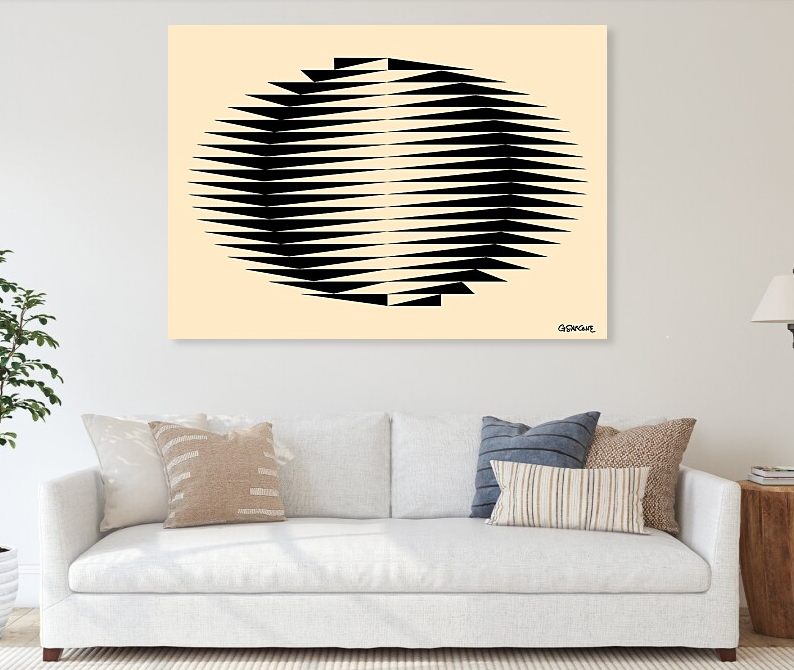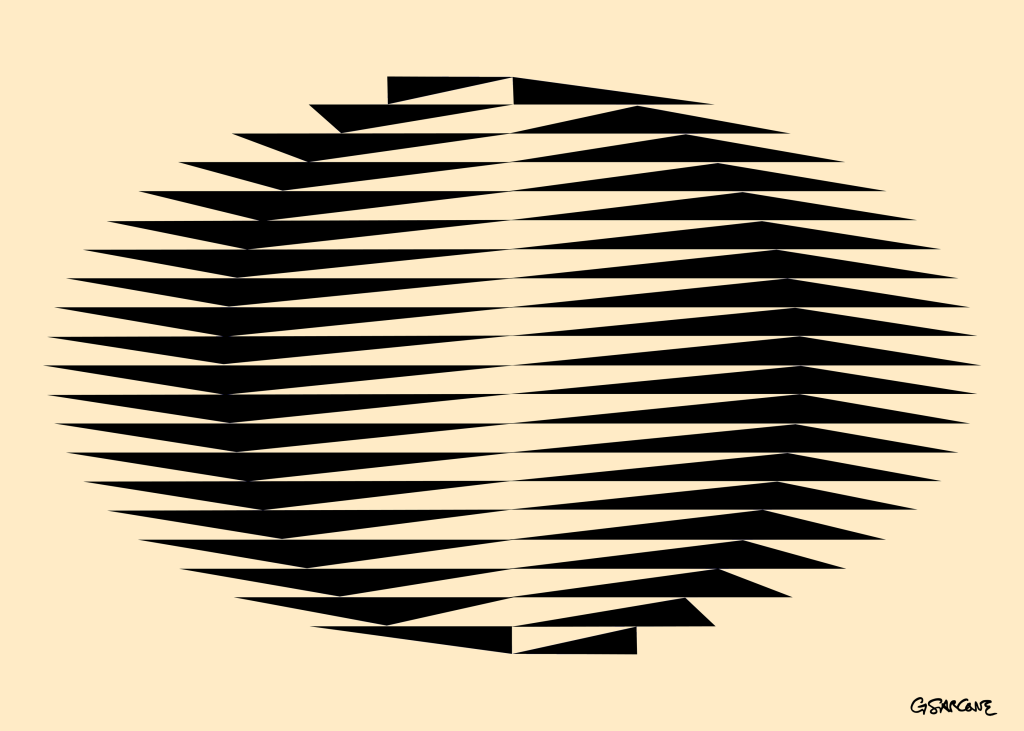A memory from Japan, where I lived briefly in the 1980s. This piece recalls earthy colors, organic shapes, and fragments of that time. A circle emerges from a flowing field of triangles—like ripples of moonlight dancing on the sea near Kamakura.

Immersing yourself in my op art is an invitation into a world where opposing forces meet, attract, and interlock, creating a balance both precise and hypnotic. It is a silent yet unending dialogue between art, form, line, color, mathematical concepts, the science of perception, and, above all, symbols. The symbolic depth of my work reaches beyond surface appearance, engaging with archetypes and forgotten rites that still pulse within the collective unconscious.

This unique op art piece is available as fine art prints and canvases in my online gallery.



















